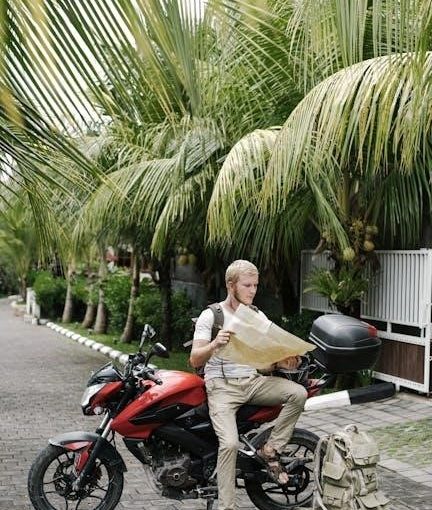Effective packing is crucial for a seamless backpacking experience, ensuring you carry only essentials while maintaining comfort and efficiency. This guide offers strategies to minimize weight, maximize space, and organize gear for any adventure, helping you travel smarter and lighter with versatile, practical items.
Why Proper Packing is Essential for Backpacking
Proper packing is essential for backpacking because it ensures that you carry only the necessities, making your journey more comfortable and manageable. By minimizing the weight and volume of your backpack, you can maintain energy levels and move more freely. Effective packing also involves organizing your gear so that items are easily accessible, saving time and reducing frustration. Additionally, proper packing contributes to safety by preventing items from shifting and causing imbalance, which is crucial while navigating challenging terrains. It also enhances efficiency, allowing quick access to needed items without unpacking everything. Lastly, proper packing ensures preparedness for various activities and weather conditions, making your backpacking experience more enjoyable and stress-free.
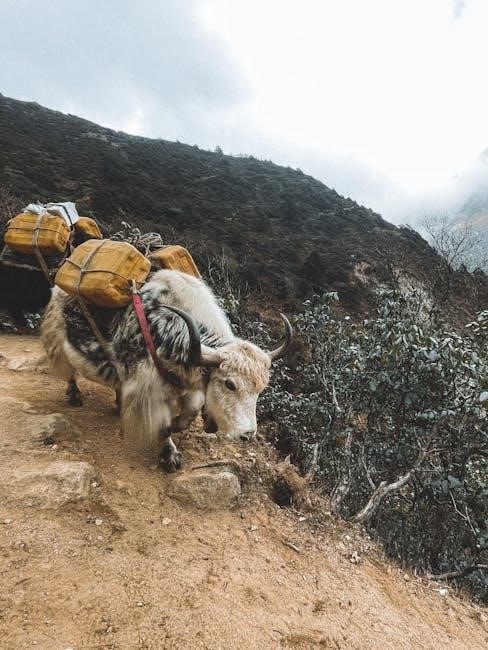
Choosing the Right Backpack
Selecting the right backpack ensures comfort and efficiency, with proper fit, durability, and multiple compartments to organize gear effectively for long-term travel and various terrains.
How to Select the Correct Backpack Size
Selecting the right backpack size is vital for comfort and practicality. Consider the duration of your trip, the items you plan to carry, and your personal comfort level. A backpack that is too large may lead to overpacking, while one that is too small may not hold essentials. Measure your torso to ensure proper fit, as backpack sizes vary based on body dimensions. Look for adjustable straps to customize the fit further. Test the backpack with weighted items to gauge comfort during extended wear. Opting for a 60-70-liter backpack is ideal for long-term travel, while smaller sizes (30-40 liters) are better for shorter trips. Ensure the backpack has multiple compartments to keep gear organized and accessible. Proper sizing ensures a balanced load and reduces strain during your journey.
Key Features to Look for in a Backpack
A good backpack should be durable, comfortable, and functional. Look for sturdy materials like nylon or polyester, reinforced stitching, and weather-resistant coatings. Multiple compartments and pockets help organize gear, while padded shoulder straps and a hip belt ensure even weight distribution. A built-in rain cover is a practical feature for wet conditions. Consider a backpack with a frame, either internal or external, to maintain structure and support. Zippers should be sturdy, and some backpacks offer anti-theft features like lockable pockets. Reflective details can enhance visibility in low light. Ensure the backpack is breathable and moisture-wicking to keep you dry during long hikes. These features collectively ensure comfort, durability, and practicality for any backpacking adventure.
Packing Essentials
Packing essentials include versatile clothing, travel-sized toiletries, must-have electronics, and practical gear. Focus on lightweight, multi-use items to save space and reduce clutter while ensuring all needs are met.
Clothing: Versatile and Layerable Items
Choosing the right clothing is vital for backpacking. Opt for versatile, layerable items that can adapt to varying climates and activities. Include moisture-wicking base layers, insulating mid-layers, and waterproof outerwear. Pack lightweight, quick-drying fabrics to minimize weight and maximize comfort. Consider seasonal needs, adding thermal layers for cold weather or breathable fabrics for hot climates. Neutral colors and multipurpose pieces, like a sarong or reversible jacket, reduce the need for multiple outfits. Aim for a mix of durability and practicality, ensuring each item serves multiple purposes to keep your pack light and efficient for extended trips.
Toiletries: Travel-Sized and Multipurpose Products
When packing toiletries for backpacking, prioritize travel-sized and multipurpose items to save space and weight. Opt for a reusable water bottle, travel-sized toiletry bag, and decant larger products into smaller containers. Include essentials like toothbrush, toothpaste, and biodegradable soap for camping. Pack a small first-aid kit with band-aids, antiseptic wipes, and pain relievers. Consider a toothbrush with built-in toothpaste compartment or a multipurpose soap for washing clothes and body. Don’t forget sunscreen, insect repellent, and a quick-drying travel towel. Avoid single-use plastics and choose eco-friendly alternatives. Always check airline or destination regulations for restricted items. Packing smart toiletries ensures convenience and compliance without compromising on hygiene and comfort during your journey.
Electronics: Must-Have Gadgets for Backpackers
When it comes to electronics, backpackers should focus on lightweight, versatile, and essential gadgets. A smartphone is a must for navigation, photos, and staying connected. Pack a portable charger or power bank to keep devices charged on the go. A compact laptop or tablet is ideal for remote work or entertainment. Don’t forget universal travel adapters for foreign outlets and noise-canceling headphones for long journeys. Consider a reusable power strip if sharing accommodations. Include extra memory cards or cloud storage for photos and videos. Always organize cables with a travel cable organizer to avoid tangles. Choose gear that balances functionality with minimal weight and space, ensuring you stay connected without overpacking.

Additional Gear and Accessories
A reusable water bottle, travel lock, and quick-dry towel are must-haves. Include a first-aid kit, headlamp, and multi-tool for emergencies. These accessories enhance comfort and safety without adding bulk.
Footwear: Hiking Boots and Comfortable Walking Shoes
Choosing the right footwear is vital for backpacking, as it directly impacts comfort and mobility. Opt for sturdy, waterproof hiking boots with good ankle support for rugged terrains. Additionally, pack lightweight, breathable walking shoes for city exploration or relaxed days. Moisture-wicking socks are essential to prevent blisters and keep feet dry. Consider the versatility of your footwear—ideally, select shoes that can handle both trails and urban settings. Proper footwear ensures durability, comfort, and adaptability, making it a cornerstone of a well-prepared backpacking kit. Always test your shoes before the trip to avoid discomfort during your journey.
Travel Documents: Passport, Visa, and Travel Insurance
Always ensure your passport is valid for at least six months beyond your travel dates, as many countries require this for entry. Research visa requirements for each destination, as some may need applications in advance, while others offer visas on arrival. Secure travel insurance that covers unexpected medical emergencies, trip cancellations, and lost luggage. Keep digital copies of these documents accessible and leave a physical copy with a trusted contact. Losing or damaging these essentials can lead to significant delays or entry issues, so organize them securely in your backpack. Proper documentation ensures smooth travels and peace of mind during your adventure, allowing you to focus on enjoying your journey.
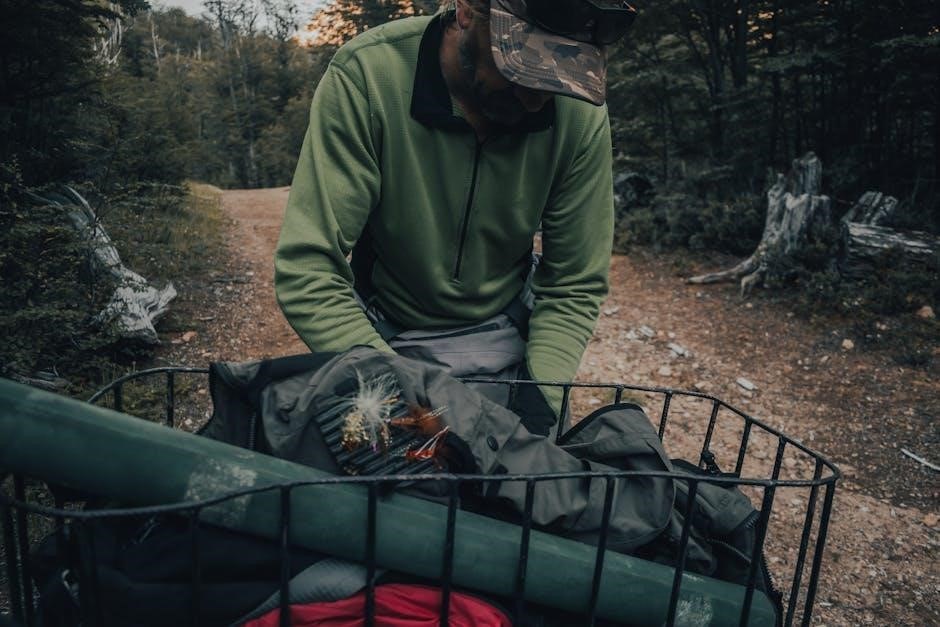
Packing Strategies
Efficient packing ensures comfort and organization, balancing weight distribution while maximizing space. Learn essential techniques to streamline your backpack, making every item count for a smoother journey.
Rolling Clothing to Save Space
Rolling clothing is a proven method to maximize backpack space and reduce wrinkles. By tightly rolling shirts, pants, and underwear, you can fit more items into your backpack. This technique also helps organize your gear, making it easier to find what you need quickly. Start by laying the item flat, fold it in half, and roll it up tightly from the bottom. Place the rolled items in your backpack, stacking them to optimize space. This strategy is especially useful for bulky items like sweaters or jeans. Additionally, rolled clothing can be grouped by type or day, helping you plan outfits in advance. This simple yet effective packing hack ensures a more efficient and stress-free travel experience.
Using Packing Cubes for Organization
Packing cubes are a game-changer for backpack organization, helping you maximize space and keep essentials easily accessible. These small, rectangular bags allow you to separate items like clothing, toiletries, and accessories, making it simple to find what you need without unpacking everything. By categorizing your gear, you can compress clothes to reduce bulk and prevent items from shifting during travel. Different-sized cubes can be used for various purposes, ensuring a tidy and structured backpack. This system not only saves time but also helps you identify missing items quickly. With packing cubes, you can maintain order, ensuring your backpacking experience remains efficient and stress-free. They are an essential tool for any traveler aiming to pack smarter and lighter;
Distributing Weight Evenly in the Backpack
Distributing weight evenly in your backpack is vital for comfort and balance during travel. Place heavier items, such as electronics or water bottles, closer to your back to maintain a low center of gravity. Lighter items, like clothing or snacks, can be positioned toward the front or bottom of the pack. This ensures the weight is balanced and reduces strain on your shoulders. Use compression straps to secure contents and prevent shifting, which can disrupt the distribution of weight. Additionally, balance the load on both sides of the backpack to avoid leaning to one side. Proper weight distribution enhances stability, making long treks more manageable and reducing fatigue during your backpacking adventure.

Weather and Climate Considerations
Weather and climate significantly impact backpacking. Pack versatile, layered clothing and gear suitable for varying conditions to ensure comfort and preparedness throughout your journey.
Packing for Hot and Humid Climates
When backpacking in hot and humid climates, prioritize lightweight, breathable clothing made from materials like cotton or linen. Include moisture-wicking fabrics to keep you dry. Pack a wide-brimmed hat, sunglasses with UV protection, and a reusable water bottle to stay hydrated. A portable fan or cooling towel can provide relief. Don’t forget sunscreen with high SPF and lip balm for sun protection. Consider a lightweight, quick-drying umbrella or rain jacket, as tropical regions often experience sudden showers. Insect repellent is essential to avoid mosquito bites. Opt for shoes that allow airflow, and pack extra socks to manage sweat. Lastly, choose a backpack with ventilation features to keep your back cool during long hikes.
Preparing for Cold and Rainy Weather
For cold and rainy conditions, pack layers of breathable, moisture-wicking fabrics like merino wool or fleece to maintain warmth. Include a waterproof and windproof jacket with a hood to protect against rain and wind. Insulated, waterproof gloves or mittens, a warm beanie, and a scarf or neck gaiter are essential. Bring a lightweight, quick-drying rain cover for your backpack to keep gear dry. Sturdy, waterproof hiking boots with good traction are crucial for wet and icy surfaces. Don’t forget thermal base layers and warm socks to prevent heat loss. Consider gaiters and trekking poles for snowy or muddy terrain. Always pack extra socks and a small towel for drying off. Layering clothing helps regulate body temperature and prevents moisture buildup, ensuring comfort in cold, rainy environments.
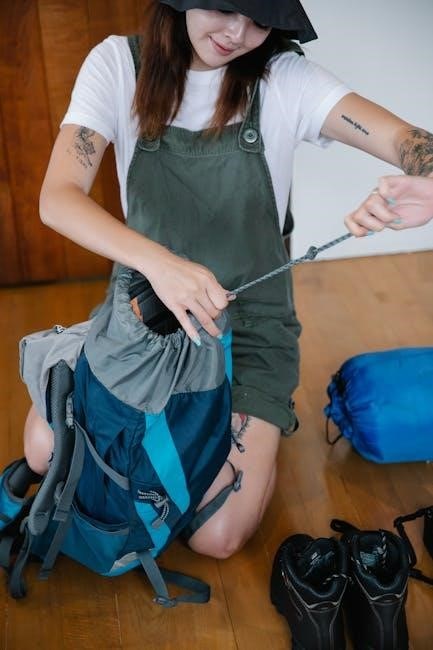
Cultural and Safety Considerations
Research local customs and dress modestly for conservative regions. Learn key phrases in the local language and stay informed about safety guidelines for your destination.
Packing Modest Clothing for Conservative Regions
When traveling to conservative areas, pack clothing that respects local customs, such as scarves, long sleeves, and pants. Opt for neutral colors and loose-fitting designs to blend in seamlessly. Lightweight fabrics like cotton or linen are ideal for comfort in warm climates. Consider a maxi dress or loose trousers for versatility. Ensure clothing covers shoulders and knees in sacred sites or traditional communities. Tailor your wardrobe to match local dress codes, avoiding revealing outfits. Layering is key for adjusting to different settings. Include quick-drying, breathable materials for ease. Research destination-specific attire to avoid offending locals. Remember, modesty varies by region, so adapt accordingly while maintaining practicality and comfort during your journey.
Essential Safety Items for Backpackers
Essential safety items are vital for every backpacker to ensure a secure and prepared journey. A well-stocked first aid kit is crucial for addressing minor injuries promptly, with bandages, antiseptics, and pain relievers. A whistle or other signaling device can be a lifesaver in emergency situations, helping you to call for help when needed. A flashlight or headlamp provides reliable lighting for navigating in the dark and can also serve as a signal tool. Don’t forget a portable charger or power bank to keep your devices charged, especially in remote areas with limited electricity access. Consider packing travel locks to secure your luggage and belongings from theft. An emergency blanket is invaluable for unexpected cold weather or injuries. Lastly, include personal safety items like pepper spray for added protection. These items collectively enhance your safety and preparedness, allowing you to enjoy your adventure with peace of mind.
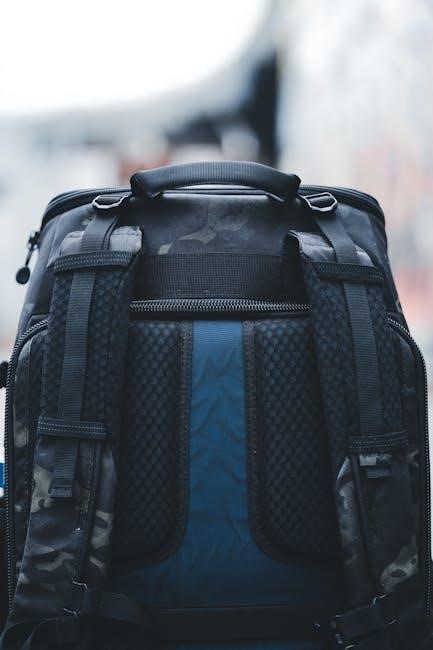
Final Checklist
Review all essentials, ensuring lightweight and weather-appropriate gear. Double-check expiration dates for toiletries and medications. Confirm travel documents and reservation details. Adjust for destination-specific needs and conditions.
Last-Minute Packing Tips
Before finalizing, roll your clothing to save space and reduce wrinkles. Check the weather forecast for your destination and adjust your packing list accordingly. Ensure all toiletries are in travel-sized containers and sealed properly to avoid leaks. Pack a small, easily accessible daypack with essentials like water, snacks, and a first-aid kit for the journey. Double-check that all medications and personal care items are included and not expired. Verify that your passport, visa, and travel insurance documents are up to date and easily accessible; Consider wearing your heaviest or bulkiest items, like hiking boots, to save space in your backpack. Finally, leave a little extra space for souvenirs and items you might purchase along the way.
Double-Checking the Backpack Before Departure
Before heading out, thoroughly inspect your backpack to ensure everything is packed and secure. Verify that all essential items, such as travel documents, electronics, and medications, are included and easily accessible. Check that clothing and toiletries are neatly organized, and all zippers and compartments are properly closed. Confirm that no items are expired or damaged, and that you have adequate supplies for the duration of your trip. Ensure the backpack’s weight is evenly distributed and comfortable to carry. Finally, take a moment to mentally review your packing list and make any necessary adjustments. A last-minute check can prevent overlooked items and ensure a smooth start to your journey.
This guide covers backpacking essentials, from choosing gear to efficient packing strategies, ensuring travelers are prepared for any adventure. By organizing and prioritizing, you can explore confidently and enjoyably;
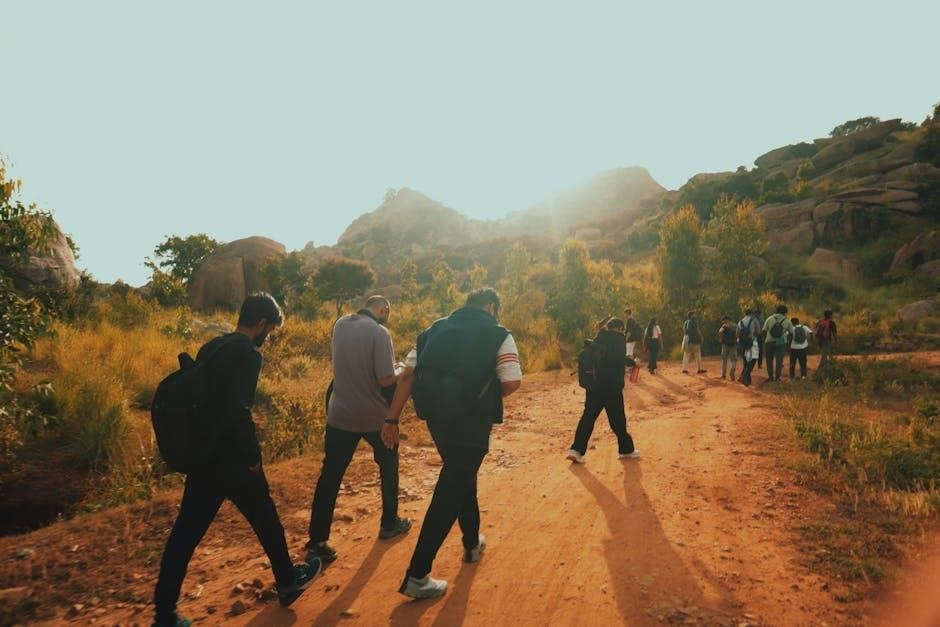
Summarizing the Backpacking Packing Guide
This guide provides a comprehensive approach to backpacking, focusing on efficient packing, essential gear, and practical strategies. It emphasizes minimizing weight, organizing items effectively, and preparing for diverse conditions, ensuring travelers are well-equipped for any adventure. By prioritizing versatile, lightweight gear and using techniques like rolling clothing or packing cubes, backpackers can maximize comfort and flexibility. The guide also addresses cultural and safety considerations, reminding travelers to pack appropriately for their destinations. Whether for a short trip or an extended journey, these tips help create a balanced and functional packing list, ensuring a stress-free and enjoyable experience.
